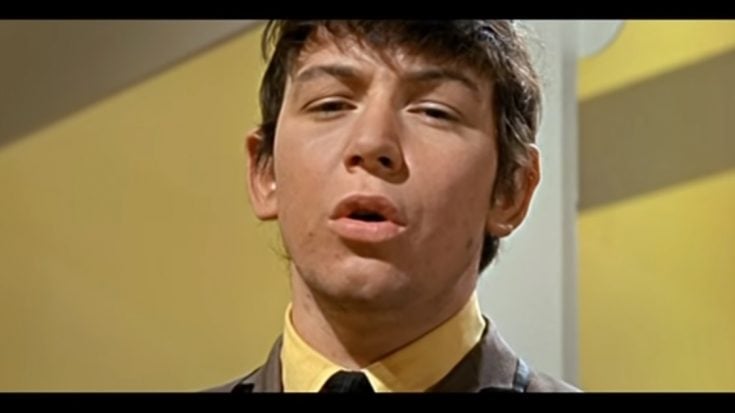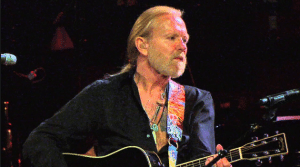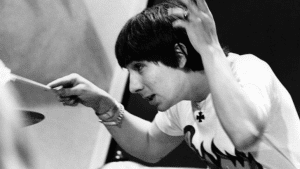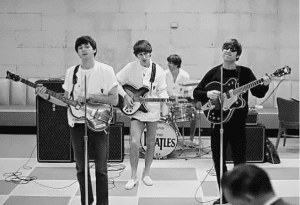Looking Back At The Most Popular Songs Each Month In The 1960s

Eric Burdon of The Animals - NoMadU55555 / Youtube
Dig out your platform shoes and crank up the record player, because we’re taking a trip down memory lane! The 1960s was a decade bursting with cultural change, and music was right at the forefront.
From the early days of doo-wop and rock and roll to the rise of the British Invasion and the birth of psychedelic rock, the music of the 60s continues to hold a special place in our hearts.
Thanks to the amazing folks at the Top Culture YouTube channel, we have a unique opportunity to relive this musical era on a month-by-month basis. They’ve meticulously curated a list of the most popular songs from each month throughout the 1960s.
So, get ready to revisit some forgotten gems and sing along to timeless classics – it’s time to see what topped the charts and rocked the airwaves back in the groovy decade!
1960
The year 1960 offered a diverse range of chart-toppers, reflecting the evolving sounds of the decade. Johnny Preston’s “Running Bear” kicked things off with a playful doo-wop vibe, while Mark Dinning’s “Teen Angel” and Jim Reeves’ “He’ll Have To Go” showcased the enduring popularity of ballads.
Orchestral grandeur arrived with Percy Faith’s “Theme From a Summer Place,” a perfect soundtrack for those hot summer days. Elvis Presley, ever the dominant force, secured two #1 hits: the playful “Stuck on You” and the dramatic “It’s Now or Never.” This variety set the stage for a decade filled with musical exploration.
January 1960 – “Running Bear” – Johnny Preston
February 1960 – “Teen Angel” – Mark Dinning
March 1960 – “He’ll Have To Go” – Jim Reeves
April 1960 – “Theme From a Summer Place” – Percy Faith
May 1960 – “Stuck On You” – Elvis Presley
June 1960 – “Cathy’s Clown” – The Everly Brothers
July 1960 – “Everybody’s Somebody’s Fool” – Connie Francis
August 1960 – “I’m Sorry” – Brenda Lee
September 1960 – “Apache” – The Shadows
October 1960 – “It’s Now Or Never” – Elvis Presley
November 1960 – “Save The Last Dance For Me” – The Drifters
December 1960 – “Are You Lonesome Tonight” – Elvis Presley
1961
1961 saw a shift towards new sounds and rising stars. The dreamy melody of Bert Kaempfert’s “Wonderland By Night” ushered in the new year, while The Shirelles’ “Will You Love Me Tomorrow” introduced a powerful new voice in girl groups. Elvis Presley remained a force, with the sentimental “Wooden Heart” and the dramatic “Surrender” topping the charts.
However, other artists began to make their mark, like Del Shannon with the electrifying rock anthem “Runaway” and Ricky Nelson’s ode to the restless spirit, “Travelin’ Man.” The year closed out with two iconic songs: Ray Charles’ powerful plea, “Hit The Road Jack,” and the playful rock and roll of Dion’s “Runaround Sue.”
January 1961 – “Wonderland By Night” – Bert Kaempfert
February 1961 – “Will You Love Me Tomorrow” – The Shirelles
March 1961 – “Wooden Heart” – Elvis Presley
April 1961 – “Blue Moon” – The Marcels
May 1961 – “Runaway” – Del Shannon
June 1961 – “Surrender” – Elvis Presley
July 1961 – “Travelin’ Man” – Ricky Nelson
August 1961 – “You Don’t Know” – Helen Shapiro
September 1961 – “Take Good Care Of My Baby” – Bobby Vee
October 1961 – “Hit The Road Jack” – Ray Charles
November 1961 – “Runaround Sue” – Dion
December 1961 – “The Lion Sleeps Tonight” – The Tokens
1962
1962 was a year of genre-hopping chart-toppers. The year kicked off with Cliff Richard & The Shadows’ upbeat “The Young Ones,” a sign of the continued popularity of British rock. Elvis Presley remained a dominant force, scoring hits with the romantic ballad “Can’t Help Falling In Love” and the playful novelty tune “Good Luck Charm.” However, the year also saw the rise of new sounds.
Ray Charles’ soulful rendition of “I Can’t Stop Loving You” showcased the power of R&B, while Little Eva’s dance craze anthem “The Loco-Motion” ushered in the era of the girl group. The instrumental phenomenon continued with The Tornados’ space-age themed “Telstar,” while The Four Seasons’ “Sherry” brought a new sophistication to doo-wop. This musical diversity set the stage for a decade of constant evolution and innovation.
January 1962 – “The Young Ones” – Cliff Richards & The Shadows
February 1962 – “Can’t Help Falling In Love” – Elvis Presley
March 1962 – “Hey! Baby” – Bruce Channel
April 1962 – “Wonderful Land” – The Shadows
May 1962 – “Good Luck Charm” – Elvis Presley
June 1962 – “I Can’t Stop Loving You” – Ray Charles
July 1962 – “Roses Are Red (My Love)” – Bobby Vinton
August 1962 – “The Loco-Motion” – Little Eva
September 1962 – “Speedy Gonzales” – Pat Boone
October 1962 – “Sherry” – The Four Seasons
November 1962 – “Telstar” – The Tornados
December 1962 – “Return To Sender” – Elvis Presley
1963
1963 continued the trend of genre-bending chart-toppers. The year opened with the folksy charm of The Rooftop Singers’ “Walk Right In,” a reminder of the enduring appeal of folk music. However, new sounds were bubbling under the surface. The girl group sound flourished with The Chiffons’ sassy “He’s So Fine” and Lesley Gore’s empowering anthem, “It’s My Party.” Even Elvis got in on the act with the bluesy swagger of “(You’re The) Devil In Disguise.”
A global influence emerged with Kyu Sakamoto’s “Sukiyaki,” a Japanese novelty song that became a surprise hit. The year closed with a powerful message of hope from Gerry & The Pacemakers’ “You’ll Never Walk Alone” and the unexpected success of Soeur Sourire’s novelty song, “Dominique,” sung by a French nun. 1963 proved that music truly had no borders.
January 1963 – “Walk Right In” – The Rooftop Singers
February 1963 – “Hey Paula” – Paul & Paula
March 1963 – “Summer Holiday” – Cliff Richards & The Shadows
April 1963 – “He’s So Fine” – The Chiffons
May 1963 – “I Will Follow Him” – Little Peggy March
June 1963 – “It’s My Party” – Lesley Gore
July 1963 – “Sukiyaki” – Kyu Sakamoto
August 1963 – “(You’re The) Devil In Disguise” – Elvis Presley
September 1963 – “Blue Velvet” – Bobby Vinton
October 1963 – “Sugar Shack” – Jimmy Gilmer & The Fireballs
November 1963 – “You’ll Never Walk Alone” – Gerry & The Pacemakers
December 1963 – “Dominique” – Soeur Sourire
1964
1964 witnessed a seismic shift in the musical landscape with the arrival of The Beatles. Their infectious melodies and youthful energy dominated the charts for the first half of the year, with “She Loves You,” “I Want to Hold Your Hand,” “I Saw Her Standing There,” “Can’t Buy Me Love,” and “A Hard Day’s Night” all reaching #1. While Beatlemania gripped the world, other artists carved their own space.
Mary Wells’ soulful declaration “My Guy” became a girl group classic, and Peter and Gordon offered a more introspective take on love with “A World Without Love.” The Four Seasons continued their doo-wop reign with “Rag Doll,” while The Animals’ haunting ballad “The House of the Rising Sun” showcased the rise of folk rock. Roy Orbison’s dramatic “Oh, Pretty Woman” and The Supremes’ Motown masterpiece “Baby Love” rounded out the year, proving that 1964 was a year of incredible musical diversity, forever marked by the arrival of the Fab Four.
January 1964 – “She Loves You” – The Beatles
February 1964 – “I Want To Hold Your Hand” – The Beatles
March 1964 – “I Saw Her Standing There” – The Beatles
April 1964 – “Can’t Buy Me Love” – The Beatles
May 1964 – “My Guy” – Mary Wells
June 1964 – “A World Without Love” – Peter and Gordon
July 1964 – “Rag Doll” – The Four Seasons
August 1964 – “A Hard Day’s Night” – The Beatles
September 1964 – “The House Of The Rising Sun” – The Animals
October 1964 – “Oh, Pretty Woman” – Roy Orbison
November 1964 – “Baby Love” – The Supremes
December 1964 – “Mr. Lonely” – Booby Vinton
1965
1965 was a year of dominance by the British Invasion, but also saw the rise of American countercurrents. The Beatles juggernaut continued with chart-topping hits like the driving “I Feel Fine,” the jangly “Eight Days A Week,” and the playful “Ticket to Ride.” However, a new challenger emerged: The Rolling Stones. Their rebellious anthem “(I Can’t Get No) Satisfaction” resonated with a growing youth movement, while their bluesy rocker “The Last Time” offered a grittier alternative to the Beatles’ sound.
American groups also made their mark. The Byrds reimagined Bob Dylan’s “Mr. Tambourine Man” with folk-rock sensibilities, and Sonny & Cher’s catchy duet “I Got You Babe” captured the carefree spirit of the era. The year ended with two Beatles classics: the introspective ballad “Yesterday” and the psychedelic rock of “Help!,” hinting at the musical explorations to come in the latter half of the decade.
January 1965 – “I Feel Fine” – The Beatles
February 1965 – “Downtown” – Petula Clark
March 1965 – “Eight Days A Week” – The Beatles
April 1965 – “The Last Time” – The Rolling Stones
May 1965 – “Ticket To Ride” – The Beatles
June 1965 – “Mr. Tambourine Man” – The Byrds
July 1965 – “(I Can’t Get No) Satisfaction” – The Rolling Stones
August 1965 – “I Got You Babe” – Sonny & Cher
September 1965 – “Help!” – The Beatles
October 1965 – “Yesterday” – The Beatles
November 1965 – “Get Off My Cloud” – The Rolling Stones
December 1965 – “Turn! Turn! Turn! (To Everything There Is a Season)” – The Byrds
1966
1966 showcased the growing sophistication of popular music. The Beatles continued to push boundaries, with the optimistic “We Can Work It Out” and the introspective “Nowhere Man” reflecting a more mature sound. However, the competition remained fierce. Petula Clark returned to the top with the elegant ballad “My Love,” while Nancy Sinatra’s sassy anthem “These Boots Are Made for Walkin'” became a feminist icon’s anthem.
The emerging sounds of psychedelic rock arrived with The Rolling Stones’ brooding masterpiece “Paint It Black,” a stark contrast to Frank Sinatra’s classic crooning on “Strangers In The Night.” Summer vibes were captured by The Lovin’ Spoonful’s “Summer In The City” and The Supremes’ soulful plea “You Can’t Hurry Love.” The year closed with two innovative works: The Beatles’ whimsical “Yellow Submarine” and The Beach Boys’ groundbreaking psychedelic epic “Good Vibrations,” both hinting at the musical revolution to come.
January 1966 – “We Can Work It Out” – The Beatles
February 1966 – “My Love” – Petula Clark
March 1966 – “These Boots Are Made For Walking” – Nancy Sinatra
April 1966 – “Nowhere Man” – The Beatles
May 1966 – “Monday, Monday” – The Mamas & The Papas
June 1966 – “Paint It Black” – The Rolling Stones
July 1966 – “Strangers In The Night” – Frank Sinatra
August 1966 – “Summer In The City” – The Lovin’ Spoonful
September 1966 – “You Can’t Hurry Love” – The Supremes
October 1966 – “Yellow Submarine” – The Beatles
November 1966 – “Reach Out I’ll Be There” – Four Tops
December 1966 – “Good Vibrations” – The Beach Boys
1967
1967 was a year of surprising hits and burgeoning movements. Tom Jones’ powerful ballad “Green, Green Grass of Home” kicked off the year, showcasing the continued popularity of traditional pop music. The Monkees, a manufactured pop band for a television show, defied expectations with the catchy “I’m a Believer,” proving their musical merit. The Beatles continued to innovate, with the whimsical charm of “Penny Lane” offering a glimpse into their psychedelic explorations.
A touch of sappy romance entered the charts with Frank Sinatra and Nancy Sinatra’s sweet duet “Somethin’ Stupid.” Meanwhile, the soundscape expanded with Procol Harum’s haunting rock masterpiece “A Whiter Shade of Pale,” a song that redefined the genre’s possibilities. The year closed with another Monkees hit, the upbeat “Daydream Believer,” while the burgeoning counterculture movement found its voice in Scott McKenzie’s anthemic “San Francisco (Be Sure To Wear Flowers In Your Hair).”
January 1967 – “Gren, Green Grass Of Home” – Tom Jones
February 1967 – “I’m A Believer” – The Monkees
March 1967 – “Penny Lane” – The Beatles
April 1967 – “Somethin’ Stupid” – Frank Sinatra & Nancy Sinatra
May 1967 – “Puppet On A String” – Sandie Shaw
June 1967 – “Silence Is Golden” – The Tremeloes
July 1967 – “A Whiter Shade Of Pale” – Procol Harum
August 1967 – “All You Need Is Love” – The Beatles
September 1967 – “The Letter” – The Box Tops
October 1967 – “San Francisco (Be Sure To Wear Flowers In Your Hair)” – Scott McKenzie
November 1967 – “Massachusetts” – Bee Gees
December 1967 – “Daydream Believer” – The Monkees
1968
1968 was a year of contrasts, with established artists sharing the spotlight with new voices. The Beatles remained a dominant force, with the playful “Hello, Goodbye” and the epic ballad “Hey Jude” topping the charts. However, lighter fare also found success, like the novelty song “Judy In Disguise (With Glasses)” by John Fred & His Playboy Band and Bobby Goldsboro’s sentimental ballad “Honey.”
A touch of social commentary emerged with Simon & Garfunkel’s introspective “Mrs. Robinson,” capturing the anxieties of the times. The burgeoning sound of soul music gained wider recognition with Marvin Gaye’s powerful “I Heard It Through The Grapevine,” released near the end of the year. This musical diversity set the stage for a year of social and musical revolution.
January 1968 – “Hello, Goodbye” – The Beatles
February 1968 – “Judy In Disguise (With Glasses)” – John Fred And His Playboy Band
March 1968 – “Love Is Blue” – Paul Mauriat
April 1968 – “Lady Madonna” – The Beatles
May 1968 – “Honey” – Bobby Goldsboro
June 1968 – “Mrs. Robinson” – Simon & Garfunkel
July 1968 – “This Guy’s In Love With You” – Herb Alpert
August 1968 – “Mony Mony” – Tommy James And The Shondells
September 1968 – “Harper Valley P.T.A.” – Jeannie C. Riley
October 1968 – “Hey Jude” – The Beatles
November 1968 – “Those Were The Days” – Mary Hopkin
December 1968 – “I Heard It Through The Grapevine” – Marvin Gaye
1969
1969 was a year that reflected the changing social and musical landscape. The playful pop of Marmalade’s “Ob-La-Di, Ob-La-Da” and the Bee Gees’ introspective ballad “I Started a Joke” kicked off the year. Tommy Roe’s energetic “Dizzy” showcased the enduring popularity of bubblegum pop. However, a new era was dawning. The 5th Dimension’s “Aquarius/Let the Sunshine In” captured the optimism of the flower power movement, while The Beatles themselves explored social issues with “The Ballad of John and Yoko.”
Technological anxieties surfaced in Zager & Evans’ sci-fi novelty song “In the Year 2525 (Exordium & Terminus).” The Rolling Stones brought back a dose of rock and roll swagger with “Honky Tonk Women,” while Creedence Clearwater Revival’s swampy blues rock with “Bad Moon Rising” offered a different sonic experience. The year ended with two iconic songs: The Archies’ bubblegum pop masterpiece “Sugar, Sugar” and The Beatles’ beautiful ballad “Something,” a testament to the enduring power of melody and songwriting.
January 1969 – “Ob-La-Di, Ob-La-Da” – Marmalade
February 1969 – “I Started A Joke” – Bee Gees
March 1969 – “Dizzy” – Tommy Roe
April 1969 – “Aquarius / Let The Sunshine In” – The 5th Dimension
May 1969 – “Get Back” – The Beatles & Billy Preston
June 1969 – “The Ballad Of John And Yoko” – The Beatles
July 1969 – “In The Year 2525 (Exordium & Terminus)” – Zager & Evans
August 1969 – “Honky Tonk Women” – The Rolling Stones
September 1969 – “Bad Moon Rising” – Creedence Clearwater Revival
October 1969 – “Sugar, Sugar” – The Archies
November 1969 – “Suspicious Minds” – Elvis Presley
December 1969 – “Something” – The Beatles





















